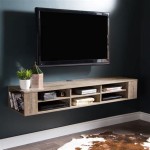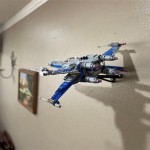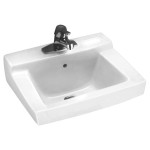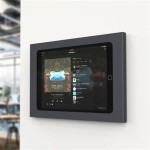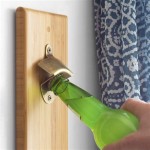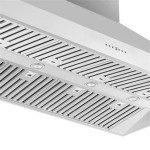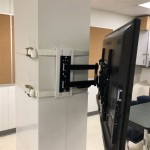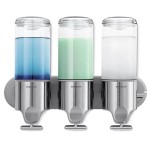Vertical Wall Mount Rack 4U: Space-Saving Solution for Network Equipment
A vertical wall mount rack, particularly in the 4U configuration, offers a practical and efficient solution for housing network equipment in environments where floor space is limited or unavailable. This mounting solution is ideal for small businesses, home offices, educational institutions, and other settings that require organized and secure storage for servers, routers, patch panels, and other electronic devices. The vertical orientation maximizes space utilization and simplifies cable management.
The “U” in 4U stands for “rack unit,” which is a standardized unit of measure used to describe the height of equipment designed to be mounted in a rack. One rack unit is equal to 1.75 inches (44.45 mm). Therefore, a 4U rack provides 7 inches (177.8 mm) of vertical mounting space. This specific size offers a balance between capacity and physical dimension, making it suitable for a variety of applications. The structure of a vertical wall mount rack ensures equipment is securely attached, protecting it from accidental damage and unauthorized access.
The utilization of a 4U vertical wall mount rack contributes to a cleaner and more organized workspace. By consolidating equipment onto a wall-mounted unit, it eliminates clutter on desks or the floor, reducing the risk of tripping hazards and promoting a more professional and efficient working environment. Furthermore, the improved organization facilitates easier troubleshooting and maintenance of the equipment.
Optimizing Space with Vertical Mounting
The primary advantage of a vertical wall mount rack is its space-saving design. In environments where floor space is a premium, a traditional rack unit may not be feasible. By mounting equipment vertically on the wall, the 4U rack maximizes the available space. This is particularly beneficial in small offices, server closets, or areas with limited footprint. The vertical orientation allows for placement in narrow hallways, corners, or other areas where a floor-standing rack would be impractical. The efficient use of space allows businesses to optimize their operational layout, freeing up valuable areas for other purposes.
Beyond simply saving space, the vertical mount offers flexibility in placement. It can be installed at different heights to accommodate specific needs and preferences. For example, it can be mounted higher to keep equipment out of reach of children or to protect it from floor-level hazards such as spills or dust. The adjustable mounting height provides customization to suit the specific environment and user requirements.
Furthermore, the vertical orientation can contribute to improved airflow around the equipment. While not as significant as in larger open racks, the placement on the wall allows for some level of natural convection cooling, particularly when the rack is not completely filled. This can help to prevent overheating and extend the lifespan of the equipment housed within the rack.
Enhanced Cable Management and Organization
Effective cable management is crucial for maintaining a tidy and efficient network infrastructure. A 4U vertical wall mount rack facilitates organized cable routing, minimizing tangles and improving accessibility. The vertical design inherently encourages cables to be bundled and routed in a vertical direction, making it easier to trace and manage them. Proper cable management reduces the risk of accidental disconnections and simplifies troubleshooting.
Many 4U vertical wall mount racks include features such as cable pass-through holes, cable tie points, and optional cable management arms. These features allow for secure and organized routing of cables, preventing them from interfering with the equipment or becoming tangled. The use of cable ties, Velcro straps, or other cable management accessories further enhances the organization and prevents cable strain. Clear labeling of cables at both ends is also recommended to facilitate identification and maintenance.
Improved cable management not only enhances the aesthetic appearance of the installation but also contributes to improved performance and reliability. By preventing cable strain and minimizing the risk of disconnections, it reduces the likelihood of network disruptions and downtime. A well-organized cable infrastructure also simplifies future upgrades and maintenance, making it easier to add, remove, or replace equipment as needed.
Security and Accessibility Considerations
A 4U vertical wall mount rack provides a secure enclosure for valuable network equipment, protecting it from physical damage, dust, and unauthorized access. Securing the equipment helps to maintain its operational integrity and prevent tampering. The racks are typically constructed from durable materials such as steel or aluminum, providing a robust and protective enclosure. Many models also include locking mechanisms to further enhance security.
While the rack provides security, accessibility for maintenance and upgrades is also important. The design of the rack should allow for easy access to the equipment for troubleshooting, repairs, or modifications. Removable side panels or doors can provide access to the internal components without requiring the entire rack to be disassembled. The vertical orientation can also make it easier to reach the equipment compared to a densely packed horizontal rack.
Consider the placement of the rack in relation to power outlets and network connections. It should be located in a convenient area where it can be easily connected to power and network infrastructure. Sufficient space should be available around the rack to allow for comfortable access during maintenance and upgrades. Proper ventilation is also important to prevent overheating, although the vertical orientation and open design of many racks can help to facilitate airflow.
The selection of a suitable 4U vertical wall mount rack depends on a variety of factors including the weight and dimensions of the equipment being housed, the environmental conditions, and the security requirements. Heavier equipment will necessitate a rack with a higher weight capacity. The dimensions of the equipment must be compatible with the internal dimensions of the rack. If the environment is dusty or humid, a rack with appropriate protection against these elements may be necessary. If security is a major concern, a rack with locking doors or other security features should be considered.
Installation of a 4U vertical wall mount rack typically involves attaching it to a wall using appropriate mounting hardware. The wall must be strong enough to support the weight of the rack and the equipment it will contain. It is generally recommended to mount the rack to wall studs or use heavy-duty anchors to ensure a secure and stable installation. Proper installation is crucial for the safety and performance of the equipment being housed within the rack.
In summary, a 4U vertical wall mount rack offers a practical and efficient solution for housing network equipment in space-constrained environments. Its space-saving design, enhanced cable management capabilities, and security features make it a valuable asset for small businesses, home offices, and other organizations that require organized and secure storage for their electronic devices. By carefully selecting and installing a suitable rack, businesses can optimize their network infrastructure and improve their overall operational efficiency.
The durability of the rack is a vital aspect to consider. Look for racks constructed from high-quality steel or aluminum, materials known for their strength and resistance to corrosion. The gauge of the metal used is also important; a thicker gauge indicates greater strength and durability. Powder-coated finishes can provide additional protection against scratches and corrosion, extending the lifespan of the rack even in challenging environments.
The weight capacity of the rack directly correlates to its ability to safely support the installed equipment. Exceeding the weight limit can lead to structural failure, potentially damaging the equipment and creating a safety hazard. Always consult the manufacturer's specifications to determine the maximum weight capacity of the rack and ensure that it is sufficient for the intended application. Distribute the weight evenly within the rack to prevent stress on any single point.
Ventilation is also a critical consideration. While the open design of many vertical wall mount racks provides some level of natural convection, supplemental cooling may be necessary, particularly for equipment that generates a significant amount of heat. Perforated doors or side panels can enhance airflow, and fan kits can be added to actively circulate air and dissipate heat. Monitor the temperature within the rack and implement cooling measures as needed to prevent overheating and ensure the longevity of the equipment.

Tripp Lite 4u Low Profile Vertical Wall Mount Rack Enclosure Cabinet Srwf4u

Tripp Lite Srwallbrkt4u Wallmount Rack 4u Vertical Bracket 175lb Capacity Rs

Racksolutions 19 Inch 1u 4u Vertical Wall Mount Rack Bracket

Dynamicfunction 4u 19 In Steel Vertical Wall Mountable Server Rack

4u Vertical Wall Mount Rack Enclosure 36 Inch Switch Depth Aze
Tripp Lite Srack 4u Vertical Wall Mount Rack Bracket Supports Ups Network Hardwares

Rack Solutions 4u Vertical Wall Mount

Eaton Tripp Lite Series Srack 4u Low Profile Vertical Mount Server Depth Wall Rack Enclosure Cabinet

Tripp Lite Wallmount Rack 4u Vertical Bracket 175lb Capacity Mounting Srwallbrkt4u Corporate Armor

Tripp Lite Srack 4u Low Profile Vertical Mount Switch Depth Wall Rack Enclosure Cabinet Newegg Com

